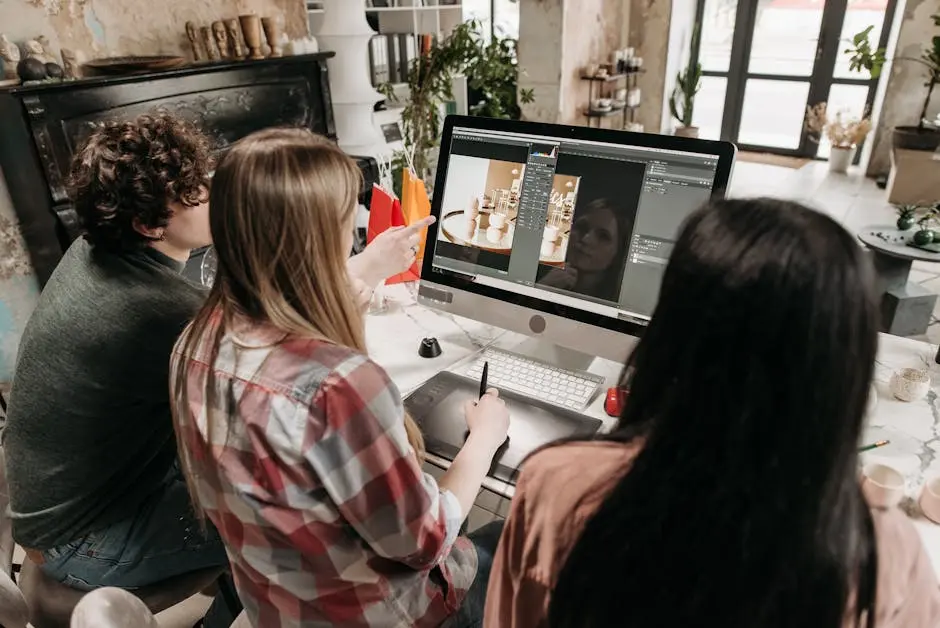What is Photoshop and Why is it Important for Designers?

Photoshop is a powerful tool that has become synonymous with design and creativity. But what exactly is Photoshop, and why has it become such an essential tool for designers around the world? In this FAQ, we'll explore the basics of Photoshop, its impact on the design industry, and why it is a crucial component of a designer's toolkit.
What is Photoshop?
Photoshop is an image editing software developed by Adobe Systems. It's widely used by designers, photographers, and graphic artists to create and edit images with a vast array of tools and features.
Renowned for its versatility, Photoshop has become a staple in the creative industry. It offers both professionals and novices tools for editing photos, creating digital art, making web designs, and even adjusting intricate details of any visual project. It's not merely an editing suite; it's a creative playground.
One of the defining characteristics of Photoshop is its widespread use across many fields. Whether for print, web, or social media, Photoshop stands as the go-to platform for turning creative ideas into reality, thanks to its established reputation and user-friendly interface.
What Are the Key Features of Photoshop?
Photoshop offers a range of tools for photo editing, graphic design, digital art, and more. Key features include layers, filters, brushes, and a suite of retouching tools that allow for precise editing.
Layers are perhaps one of Photoshop's most unique aspects, giving users the ability to stack different elements of an image, making nuanced edits without disturbing the core design. This flexibility allows for complex compositions and intricate detailing.
The software's capabilities extend to advanced navigation with Adobe's complete suite, enhancing photo details, removing imperfections, and implementing myriad artistic effects. The use of Photoshop opens avenues to sophisticated editing and photorealistic artwork.
Photoshop's brushes and digital painting tools provide a canvas of endless creativity. With brushes, designers can add texture, depth, and style to images. The vast library of adjustable brushes allows artists to mimic traditional art techniques in their digital masterpieces, while the retouching tools ensure professional-grade quality.
How Does Photoshop Impact the Design Industry?
Photoshop has revolutionized the way designers create and manipulate graphics. Its versatility and powerful tools enable designers to bring their visions to life, influencing everything from advertising to web design.
By allowing designers to manipulate images with precision, Photoshop has transformed media and advertising. Brands are able to create visually-catching advertisements that can sway consumer behavior due to the polished and engaging images Photoshop helps conceive.
The impact of Photoshop extends to digital creativity, enabling seamless innovation in graphic design trends and pushing the boundaries of conventional designs. Its tools are crucial for designers when developing brand identities and dynamic visual narratives.
Moreover, the evolution of digital marketing has amplified Photoshop's importance. Designers can craft captivating visuals aligned with strategic messaging, heightening engagement and interaction in the digital sphere. Its influence in the design industry is pervasive and unmatched.
Why is Photoshop Essential for Designers?
For designers, Photoshop is essential because it provides the flexibility to work on various projects, from branding to multimedia graphics. Its ability to integrate with other Adobe tools makes it a cornerstone of the creative process.
Apart from its robust capabilities, Photoshop's importance in graphic design lies in its ability to create a balanced blend of text and visuals. Designers can integrate typography with imagery to enhance brand storytelling, making the visual content more impactful and informative.
Understanding how to use Photoshop can set a designer apart in a competitive industry. Proficiency in Photoshop isn't just about using the tool—it's about harnessing its full potential to produce extraordinary work that meets and surpasses industry standards.
The true essence of Photoshop is in how it transforms chaos into creativity. It not only provides artful solutions but also ensures consistency in style and design quality, a vital aspect for designers aiming to maintain professional standards across projects.
How Can Designers Start Using Photoshop?
Designers can begin using Photoshop by exploring online tutorials, experimenting with different tools, and practicing with small projects. Adobe also offers comprehensive resources and community support for new users.
Embarking on a design journey with Photoshop can be straightforward. Start by engaging with basic tutorials that break down each feature into manageable lessons. Participating in community-driven platforms can provide invaluable peer support and learning opportunities.
Adobe provides a plethora of learning resources, including Photoshop's own step-by-step guides. These resources are designed to cater to different learning paces, ensuring everyone from absolute beginners to moderate users can grasp the software's fundamentals effectively.
Practical application is key to mastering Photoshop. Start with smaller projects like retouching photographs or creating social media posts to build confidence over time. As skills develop, challenging oneself with more intricate designs can lead to mastery and creative innovation.
Ultimately, the path to proficiency with Photoshop lies in consistent practice and exploration. Its expansive feature set is ripe for discovering once users immerse themselves into the interactive process, enabling them to uncover personal tips and techniques.
Embrace Photoshop's Power for Creative Success
Photoshop is more than just a software; it's a gateway to creativity and innovation for designers. Its extensive features and flexibility make it an indispensable tool in the design world. Whether you're a beginner or a seasoned professional, understanding Photoshop's capabilities can elevate your design projects to new heights. Embrace its power, and let your creativity flow.
Roam: Run your design business, not just your projects. Intuitive business management tools for graphic designers


.png)





